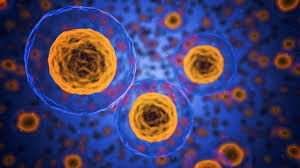Biology Notes On – Stem Cells – For W.B.C.S. Examination.
Stem cells originate from two main sources: adult body tissues and embryos.Continue Reading Biology Notes On – Stem Cells – For W.B.C.S. Examination.
- Scientists are also working on ways to develop stem cells from other cells, using genetic “reprogramming” techniques.
- There are three known accessible sources of autologous adult stem cells in humans: bone marrow, adipose tissue, and blood.
- Stem cells can also be taken from umbilical cord blood just after birth.
Characteristics of Stem Cells
All stem cells have two particular characteristics:
- Self-renewal: They are unspecialized cells capable of renewing themselves through cell division, sometimes after long periods of inactivity. In some organs, such as the gut and bone marrow, stem cells regularly divide to repair and replace worn out or damaged tissues. In other organs, however, such as the pancreas and the heart, stem cells only divide under special conditions.
- Potency: Under certain physiologic or experimental conditions, they can be induced to become tissue- or organ-specific cells with special functions.
Types of Stem Cells
- Embryonic stem cells
- Embryonic stem cells include those found within the embryo, the fetus or the umbilical cord blood.
- Depending upon when they are harvested, embryonic stem cells can give rise to just about any cell in the human body.
- The embryonic stem cells used in research today come from unused embryos resulting from an in vitro fertilization procedure and that are donated to science.
- These embryonic stem cells are pluripotent, meaning that they can turn into more than one type of cell.
- Adult stem cells
- Adult stem cells can be found in infants, children, and adults.
- They reside in already developed tissues such as those of the heart, brain, and kidney.
- They usually give rise to cells within their resident organs. There are only small numbers of stem cells in these tissues.
- Induced pluripotent stem cells (IPSC)
- These stem cells are adult, differentiated cells that have been experimentally “reprogrammed” into a stem cell-like state.
- These are adult stem cells that have been manipulated in a laboratory to take on the pluripotent characteristics of embryonic stem cells.
- Scientists first reported that human stem cells could be reprogrammed this way in 2006.
- Although induced pluripotent stem cells don’t appear to be clinically different from embryonic stem cells, scientists have not yet found one that can develop every kind of cell and tissue.
Significance of Stem Cells
- In the 3- to 5-day-old embryo, called a blastocyst, the inner cells give rise to the entire body of the organism, including all of the many specialized cell types and organs such as the heart, lungs, skin, sperm, eggs and other tissues from stem cells.
- All the cells of the immune system arise from stem cells.
- In some adult tissues, such as bone marrow, muscle, and brain, discrete populations of adult stem cells generate replacements for cells that are lost through normal wear and tear, injury, or disease.
Uses of Stem Cells
Stem cells have several uses in either research or therapy.
- In Research:
- Stem cell research helps us understand the basic biology of how living things work and what happens in different types of the cell during disease.
- Laboratory studies of stem cells enable scientists to learn about the cells’ essential properties and what makes them different from specialized cell types.
- Scientists are already using stem cells in the laboratory to screen new drugs and to develop model systems to study normal growth and identify the causes of birth defects.
- Research on stem cells continues to advance knowledge about how an organism develops from a single cell and how healthy cells replace damaged cells in adult organisms.
- Stem cell research is one of the most fascinating areas of contemporary biology, but, as with many expanding fields of scientific inquiry, research on stem cells raises scientific questions as rapidly as it generates new discoveries.
- In Therapy:
- Given their unique regenerative abilities, stem cells offer new potentials for treating diseases such as diabetes and heart disease.
- However, much work remains to be done in the laboratory and the clinic to understand how to use these cells for cell-based therapies to treat disease, which is also referred to as regenerative or reparative medicine.
Please subscribe here to get all future updates on this post/page/category/website


 Toll Free 1800 572 9282
Toll Free 1800 572 9282  mailus@wbcsmadeeasy.in
mailus@wbcsmadeeasy.in



















































































































